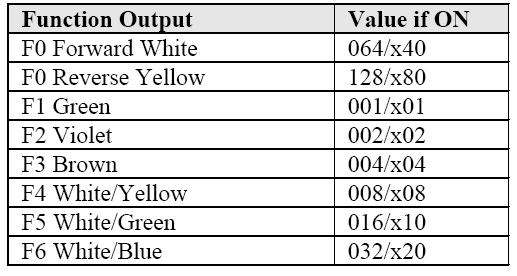What about using a Digitrax-decoder-equipped locomotive on a layout having only DC power?
It is possible, but analog operation of DCC equipped locomotives is becoming a bit of a rarity. In earlier times some locomotives were delivered from the manufacturer with a DCC decoder in place and a jumper plug was used to select the operating environment. Digitrax still offers a jumper plug for use in some configurations; you remove the decoder and replace it with the DHDP or DNDP. With later generations of decoders, it is possible to operate on a DC layout with the decoder in place. To quote from the Digitrax Mobile Decoder Manual:
Analog operation occurs when Digitrax decoders are operated on DC or conventionally controlled layouts. Automatic analog mode conversion is a feature of most Digitrax decoders, which lets you run your decoder equipped loco on a DC layout without having to re-program the decoder. There are a few things you need to know about analog operation:
- Digitrax decoder equipped locomotives will not move until the voltage is above 5 to 6 Volts DC. When operating decoder equipped locos on DC power, increase the voltage quickly from zero to five volts for best operation.
- Some decoder equipped locos may not operate smoothly on conventional "pulse power." The decoders should be driven from a quality smooth DC power supply when on a conventional layout. Some DC throttles/power supplies with proprietary control systems, such as "tracking control," exhibit pulse power characteristics and may give unpredictable operation.
- Decoders that use the Digitrax 9 Pin Decoder Interface can be easily removed from the loco and replaced with the DHDP Dummy Plug (available separately). This is very useful when you want to run your locomotives on conventional layouts without sacrificing low speed performance. It also allows you to run your engine on layouts that use pulse power. And, when you are ready to run DCC again, just remove the dummy plug & re-install the decoder and you're ready to go!
Are there settings or adjustments needed?
There are. If you want to have the headlights "on" during DC operation, CV13 must be enabled, and it only works with earlier decoders, not the current generation of FX3.
Analog Functions Enable/Disable: CV13
- In FX3 decoders, CV13 is disabled.
- In FX decoders, the analog functions enabled CV, CV13 lets you define which functions are active when the decoder is operating on DC track power. If you want function outputs F0 forward and reverse and F1 through F6 to be active when on DC (for example when using a short DC track as "brake section") program CV13 for a CV value of 255/xFF. The factory default value for CV13 is 00, which turns OFF all functions when on DC track. Note that if analog mode conversion is disabled in CV29, it will NOT affect how CV13 controls the functions. Even though the motor will stop on DC power, the functions will still operate if CV13 is programmed for them to do so. To find the best settings for you experiment with the values until you get the desired settings.
- To determine the value to program in CV13 add all the values for the functions you want to have ON during DC operation and use the Table below to convert the decimal number you came up with to the hex value you will use for programming:

- For example 64+128+1+2+4+8=207 decimal or xcF hex will operate F0 forward & reverse, F1, F2, F3 & F4 functions on DC. To operate F0 Reverse and F0 Forward add 1+2=003 decimal or x03 hex.
Will the behavior be the same as a non-decoder locomotive on DC?
In addition to the higher starting voltage mentioned in the Decoder Manual, old hands talk about the fact that some decoder features, such as momentum, still work but not to the degree that is present when the locomotive is in the DCC environment.